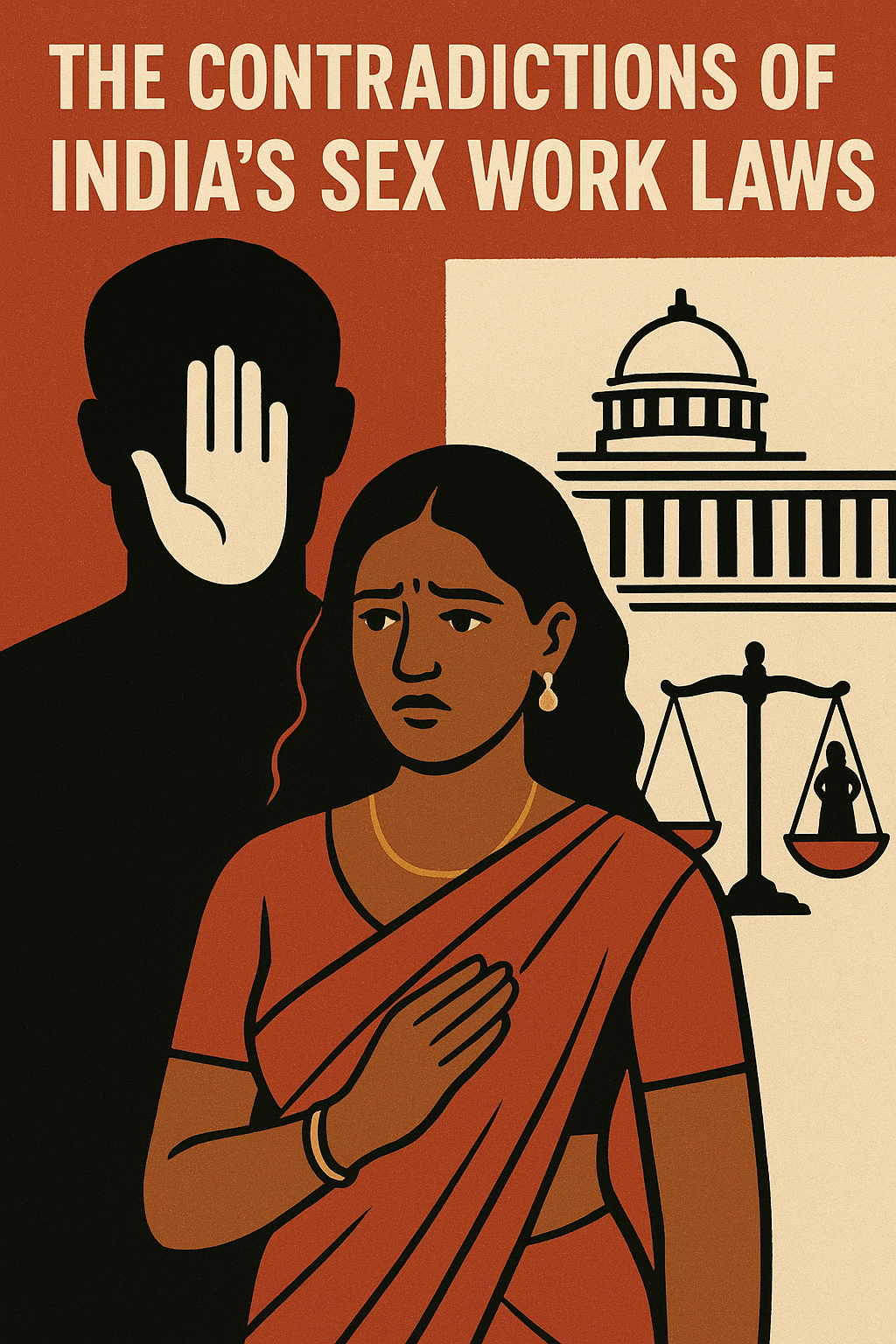



Author: Hynasri Daimari
Institution: National Law University and Judicial Academy, Assam
Introduction
The Bharatiya Nagarik Suraksha Sanhita (BNSS), 2023, represents an important change in India’s criminal justice system. The new criminal laws came into legal effect on July 1, 2024. It replaces the old Code of Criminal Procedure (CrPC), 1973, from the colonial period with a new legal system designed to guarantee quicker, fairer, and clearer criminal investigations and trials.
One of the key parts of this new law is the change in investigation powers and processes. Investigation is the first and most important step in the criminal justice system. It is during this step that the police gather evidence, interview witnesses, detain suspects, and set the groundwork for prosecution.
This article outlines the investigative powers and the procedural framework established under the Bharatiya Nagarik Suraksha Sanhita (BNSS), 2023. It shows the roles and responsibilities of the police, the rights of those accused and the victims, and the timelines and safeguards included in the new law. Understanding these provisions is important for police officers, legal professionals, and citizens, as they affect how justice is served in India.””
Initiation of Investigation: Information Provided to the Police Regarding Cognizable and Non-Cognizable Offences
The initiation of a criminal investigation is a critical first step in the criminal justice process. It begins when the police receive information about the commission of an offense. The nature of the offense—whether cognizable or non-cognizable—determines how the police are required to act. Cognizable crimes/offenses are typically non-bailable, whereas non-cognizable ones are mostly bailable. The First Schedule of the BNSS lists the classifications of offenses as cognizable or non-cognizable, bailable or non-bailable, and compoundable or non-compoundable.”
Cognizable Offences
According to Section 173(1) of the BNSS, information about the commission of a cognizable offence irrespective of the location can be provided to the officer in charge of a police station either orally or through electronic communication. If given orally, the details must be put into writing, read aloud to the informant, and signed by them. In the case of electronic communication, the information must be formally documented after being signed by the informant within three days. The substance of this information must be entered in a register prescribed by the state government.
The proviso to Section 173(1) ensures special protections for vulnerable victims:
If the informant is a woman and the offense falls under specified sections of the Bharatiya Nyaya Sanhita (BNS) (e.g., Sections 64, 66, 67, 68, 70, 73–78, 122), the statement must be recorded by a female police officer.
If the victim has a mental or physical disability, their statement must be recorded at a place of their choosing, in the presence of a special educator or interpreter, and the entire procedure must be captured on video, as mandated under Provisos (a) and (b) of Section 173.
Additionally, as per Section 183(6)(a) of the BNSS, the statement must be recorded by a Judicial Magistrate at the earliest possible opportunity. Under Section 173(2), a copy of the recorded information must be provided free of cost to the informant or victim.
Section 173(3) :If the reported cognizable offense is punishable with imprisonment of three years or more but less than seven years, the officer in charge may conduct a preliminary inquiry to ascertain whether a prima facie case exists. However, this step requires prior approval from an officer not below the rank of Deputy Superintendent of Police (DSP) and must be completed within fourteen days.
Redressal for Refusal to Register FIR—Section 173(4), BNSS 2023: If the officer in charge refuses to record the information under Section 173(1), the aggrieved person may send the information in writing or by post to the Superintendent of Police. If satisfied that a cognizable offense has occurred, the superintendent shall either investigate the matter themselves or direct a subordinate to do so. If this fails, the informant may apply to the magistrate under Section 175(3).”
Also check this article:
Judicial Transparency vs. Privacy: An Analysis of Live Streaming of Court Proceedings
Non-Cognizable Offences
Section 174(1) states that when a non-cognizable offense is reported:
The officer in charge must record the substance of the information in a prescribed format.
The informant is directed to appear before the magistrate.
The police must submit a fortnightly report of all such cases to the magistrate for oversight.
As per Section 174(2), the police cannot investigate a non-cognizable case without the magistrate’s order.
Once permission is granted, Section 174(3) empowers the police to carry out the investigation using the same procedures as in cognizable cases—except the power to arrest without a warrant.”
Power and Procedure for conducting an investigation
As per Section 176, when a police officer either receives information or has reason to believe that a cognizable offense within the scope of investigation under Section 175 has been committed, they are required to promptly forward a report to the appropriate magistrate and either visit the crime scene themselves or assign the investigation to a subordinate officer. This includes taking steps to discover facts and arrest the perpetrator. However, if the matter is not serious or the officer considers there are insufficient grounds to proceed, he may refrain from conducting an immediate on-site inquiry, as long as he writes the reasons in his report and transmits them to the magistrate every fortnight. The same section includes special provisions for rape victims. Statements of such victims must be documented at their home or a location of their choice, ideally by a female police officer and in the presence of trusted individuals. Audio-video recording, such as using mobile phones, is also an option.
Under Section 176(3), in cases where the offense is punished by seven years or more in jail, the police must ensure that a forensic expert attends the crime scene and that the entire process is videotaped. If a state lacks forensic facilities, it may temporarily rely on resources in another state, according to state government notification.
Section 177 requires that reports sent to the magistrate be routed through a superior police officer, who can offer directions and forward the report.
The BNSS also specifies powers regarding witness attendance and examination. Under Section 179, police may summon anyone familiar with the case; however, vulnerable groups such as minors, senior citizens, women, and people with disabilities cannot be forced to appear outside of their homes unless they consent.
Section 180 empowers the police to question such individuals and record their statements. These statements can also be recorded using audio-visual means. Importantly, when a woman files a complaint regarding sexual offences under specific provisions of the Bharatiya Nyaya Sanhita, her statement must be recorded by a female police officer.
Section 182 forbids incentive, intimidation, or promise during an inquiry and guarantees that statements are given willingly, while Section 181 forbids the use of police statements during trial save in certain situations.
Section 183, which permits any judicial magistrate to document voluntary confessions or comments made by the accused or witnesses, is a crucial innovation. The magistrate must warn the subject that their confession may be used as evidence and that they are under no need to confess before recording. A declaration of voluntariness and the format specified in Section 316 must be included in confessions. In order to minimize stress, statements made by vulnerable or handicapped people must be recorded with the proper assistance for serious or sexual offenses.
Additionally, Section 184 specifies that a government-approved or licensed medical professional must examine rape victims medically within 24 hours. The report must be submitted to the investigating officer within seven days, after which it is forwarded to the magistrate. It must contain information about the individual, his injuries, mental state, DNA samples, and the time of the examination.
Lastly, Section 185 gives investigative police the authority to search a location if they think it contains crucial evidence. The officer must electronically videotape the search and document the reasons for the belief in the case diary. A written order may be deputed to a junior official if the individual is unable to execute it directly. A free copy of all search records must be given to the occupier of the searched premises upon request, and all records must be turned in to the magistrate within 48 hours.
Progress of investigation
Section 193 of the BNSS deals with the procedure after the completion of a police investigation in a cognizable offense. It mandates that the investigating officer provide the magistrate with a final report, also known as a charge sheet or closure report, that includes information about the involved parties, case facts, witness list, and accused status (arrested, released, or in custody). A significant amendment introduced under Section 193(3)(ii) requires the police to keep the informant or victim updated on the progress of the investigation, including through electronic means.
Procedure when investigation cannot be completed in 24 hours
Section 187 of the BNSS specifies the procedure to be followed when an investigation cannot be concluded within the usual 24-hour timeframe set under Section 58, allowing for a request for extended detention. The police must send the accused and case diary to the closest judicial magistrate if the investigation is not complete but the accusations are valid. Based on the nature of the offense, the magistrate may grant detention for up to 15 days (in whole or in part) during the first 40 or 60 days. Subject to a maximum of 90 days for serious offenses (punishable by death, life in prison, or more than ten years) and 60 days for other offenses; further detention beyond 15 days is only permitted if warranted. Additionally, the section also mandates that the accused should be physically presented to the magistrate at first, with the option to be produced later via video connection. Without specific authority, second-class magistrates are unable to approve police custody.
An executive magistrate may grant custody for a maximum of seven days in the absence of a judicial magistrate, but the matter must be sent to a judicial magistrate before that time has passed. Every magistrate is required to document their justifications for granting custody and inform the Chief Judicial Magistrate.
Moreover, the magistrate is required to discontinue the inquiry in a summons case if it is not concluded within six months, unless there are special circumstances justifying its continuation. To permit additional research, the sessions judge has the authority to examine and overturn such an order.
Conclusion
A major change in India’s criminal justice system is brought about by the Bharatiya Nagarik Suraksha Sanhita (BNSS), 2023, which updates and redefines the investigational framework. By incorporating technology-driven processes, gathering forensic evidence, recording testimony on audio and video, and increasing transparency through victim communication, the BNSS guarantees a more effective, responsible, and citizen-focused investigation process. The BNSS seeks to improve the quality of investigations and minimize delays by correcting the shortcomings of the Criminal Procedure Code, 1973, and implementing requirements for electronic FIRs, preliminary inquiries, prompt forensic involvement, and stringent timetables. Additionally, the enhanced powers granted to magistrates, along with strengthened procedural safeguards, help strike a balance between effective law enforcement and the protection of individual rights.
References
“Enhancement of investigation procedure under Bharatiya Nagarik Suraksha Sanhita (2023). Times of India Voices. Available at:
https://timesofindia.indiatimes.com/blogs/voices/enhancement-of-investigation-procedure-under-bharatiya-nagarik-suraksha-sanhita/ (Accessed: 28 June 2025).
Chandra, A. (2024). Section 173 to section 196 of BNSS, 2023: Investigation process undertheBNSS”legalonus,LegalOnus.Availableat:https://legalonus.com/section-173-to-section-196-of-bnss-2023-investigation-process-under-the-bnss/ (Accessed: 28 June 2025).
Indiacode:BharatiyaNagarikSurakshaSanhita,2023.Availableat: https://www.indiacode.nic.in/handle/123456789/20099 (Accessed: 28 June 2025).
Drishti Judiciary (n.d.) Section 173 of Bharatiya Nagarik Suraksha Sanhita, 2023, DrishtiJudiciary.Availableat:https://www.drishtijudiciary.com/current-affairs/section-173-of-bharatiya-nagarik-suraksha-sanhita-2023 (Accessed: 28 June 2025).
Negi Advocate, C. (2023). Legal Evolution in India: Transitioning from Colonial Legacies to New Frontiers-An In-depth Analysis of Bharatiya Nyaya Sanhita, Bharatiya Nagarik Suraksha Sanhita and Bharatiya Sakshya Bill in 2023. BharatiyaNagarik SurakshaSanhita,andBharatiyaSakshyaBillin.
https://papers.ssrn.com/sol3/papers?abstract_id=4677357”